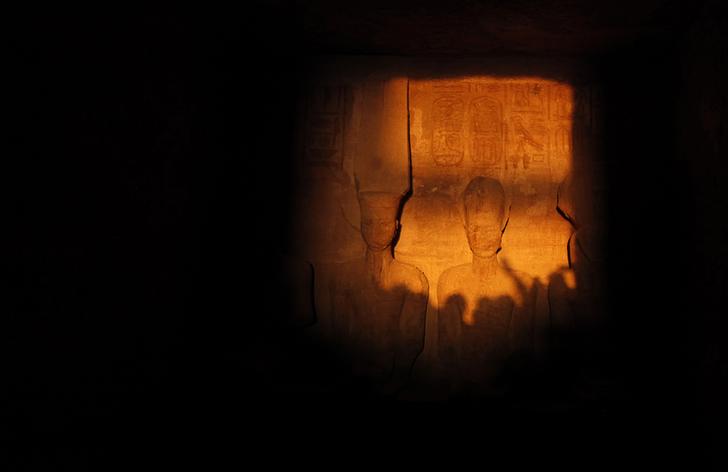Latest NEWS
- Aswat Masriya, the last word
- Roundup of Egypt's press headlines on March 15, 2017
- Roundup of Egypt's press headlines on March 14, 2017
- Former Egyptian President Hosni Mubarak to be released: lawyer
- Roundup of Egypt's press headlines on March 13, 2017
- Egypt's capital set to grow by half a million in 2017
- Egypt's wheat reserves to double with start of harvest -supply min
- Roundup of Egypt's press headlines on March 12, 2017
Statue of pharaoh's daughter unearthed in Egypt

The light of dawn shines on the statues of Pharaoh Ramses II (R) and Amun, the God of Light (L), in the inner sanctum of the temple of Abu Simbel, located at the upper reaches of the Nile in Aswan, around 1264 km (785 miles) south of Cairo February 22, 2014. REUTERS/Mohamed Abd El Ghany
CAIRO, March 7 (Reuters) - A statue of the daughter of King Amenhotep III, grandfather of Tutankhamen and ruler of Egypt around 3,350 years ago, has been unearthed by a team of Egyptian and European archaeologists.
The statue of Princess Iset was discovered at the temple of her pharaoh father on the western bank of the Nile in the southern city of Luxor, the Egyptian antiquities ministry said on Friday.
The new discovery is the first known representation of Iset alone with her father, the ministry said, noting that sculptures on display at the Egyptian Museum depict her and her siblings together with the 18th Dynasty ruler.
The statue is only 1.7 metres (yards) high and is part of a huge, 14-metre alabaster statue of Amenhotep III himself that has been excavated in recent years, the ministry said in a statement carried by state news agency MENA.
The statue was found between the feet of the seated king. Iset's name and royal title are inscribed near her feet, but her face has suffered from erosion.
Amenhotep III presided over an era which saw a renaissance in Egyptian art. He was succeeded by his son Akhenaten, the sun-worshipping pharaoh credited by some for starting the world's first known monotheistic religion.
Some of ancient Egypt's biggest monuments were constructed during Amenhotep III's reign. (Reporting By Maggie Fick; Editing by Hugh Lawson)










